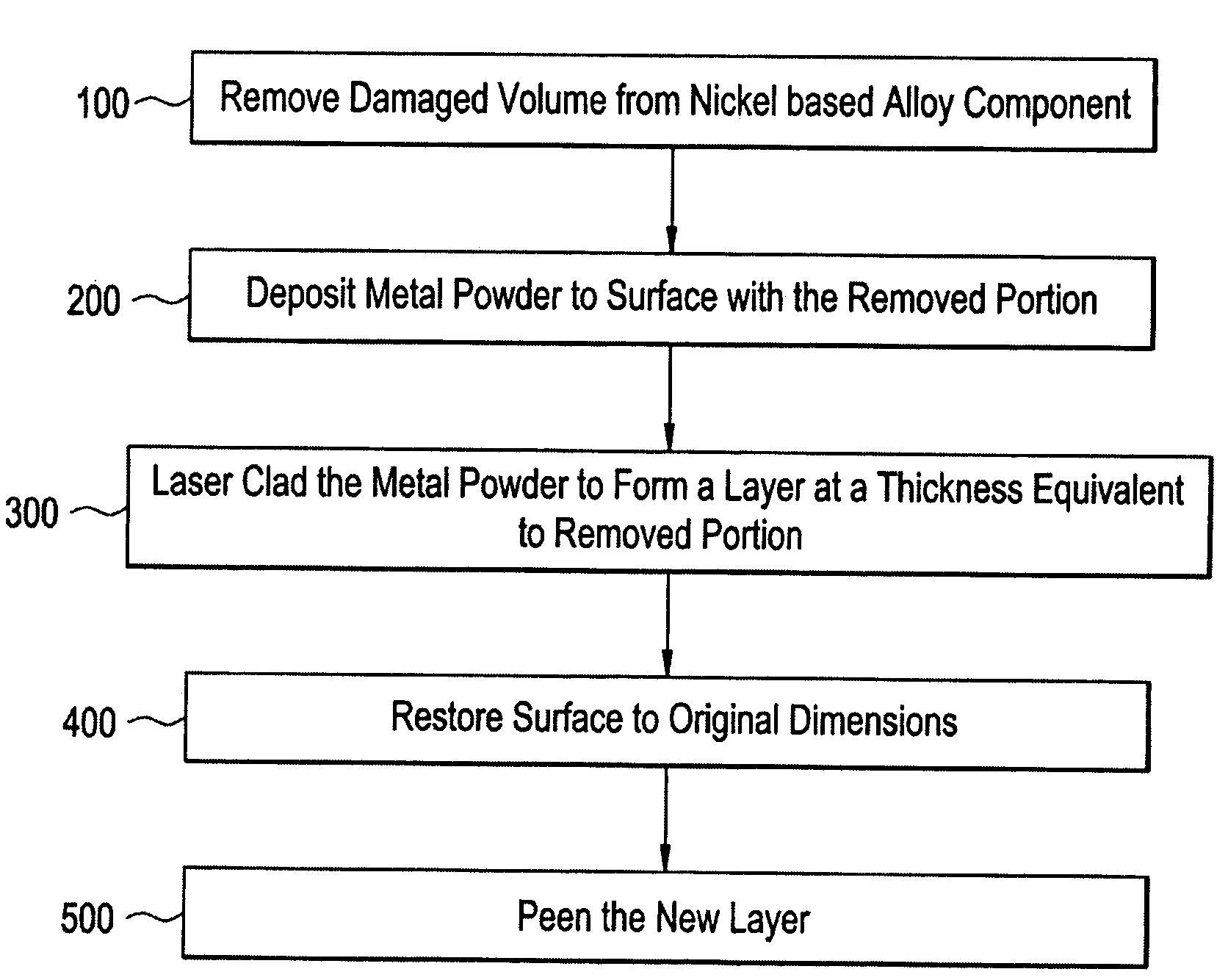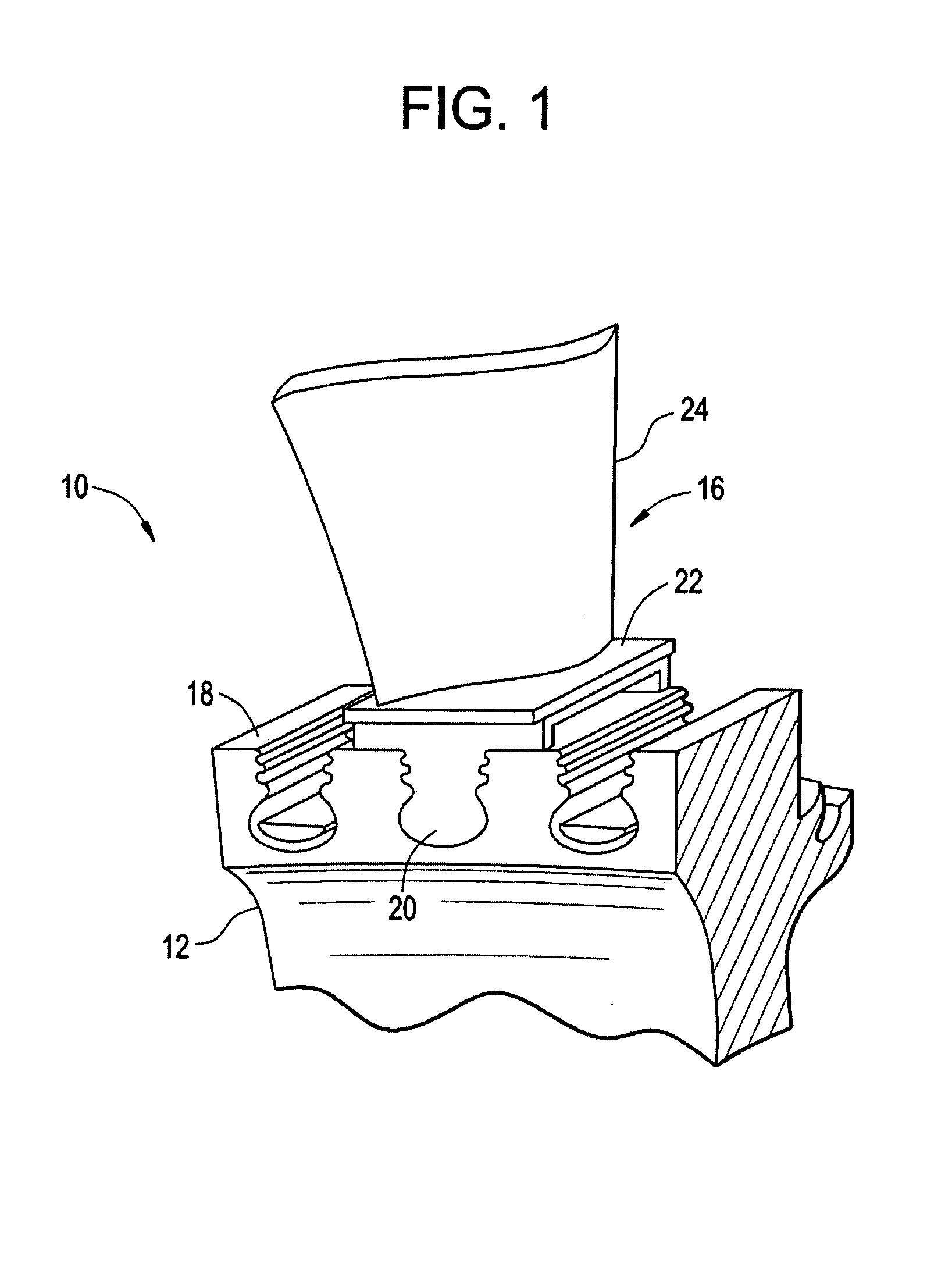Method of Repairing Nickel-Based Alloy Articles
a nickel-based alloy and alloy disc technology, applied in the direction of manufacturing tools, soldering devices, turbines, etc., can solve the problems of high thermal stress of turbine rotor discs, high temperature and load on turbine rotors, and high centrifugal and vibratory stresses
- Summary
- Abstract
- Description
- Claims
- Application Information
AI Technical Summary
Benefits of technology
Problems solved by technology
Method used
Image
Examples
Embodiment Construction
[0015]Disclosed herein is a method for repairing damaged areas, e.g., cracks, oxidized areas, and the like, in a nickel-based alloy articles such as a turbine rotor component. The method generally includes removing damaged areas (cracked and oxidized areas) with a machining process; and refilling the machined troughs (removed areas) by laser cladding with a grade ultra-fine powder metal nickel alloy, e.g., ARA 725, 718 or 706, which have mesh sizes of −150 or finer. The clad layers are free of porosities and cracks, and exhibit a homogenous fine grain microstructure (equivalent or finer than the parent metal grain size). A balanced heat input (available for powder melting and bonding, but no excess for grain growth and dilution / alloying), multiple-pass laser cladding process is developed to produce uniform, rapidly solidified and cooled buildup layers that have a fine grain microstructure; and the process gives rise to a minimal distortion of the original component.
[0016]In this met...
PUM
| Property | Measurement | Unit |
|---|---|---|
| melting point | aaaaa | aaaaa |
| diameters | aaaaa | aaaaa |
| diameters | aaaaa | aaaaa |
Abstract
Description
Claims
Application Information
 Login to View More
Login to View More - R&D
- Intellectual Property
- Life Sciences
- Materials
- Tech Scout
- Unparalleled Data Quality
- Higher Quality Content
- 60% Fewer Hallucinations
Browse by: Latest US Patents, China's latest patents, Technical Efficacy Thesaurus, Application Domain, Technology Topic, Popular Technical Reports.
© 2025 PatSnap. All rights reserved.Legal|Privacy policy|Modern Slavery Act Transparency Statement|Sitemap|About US| Contact US: help@patsnap.com



